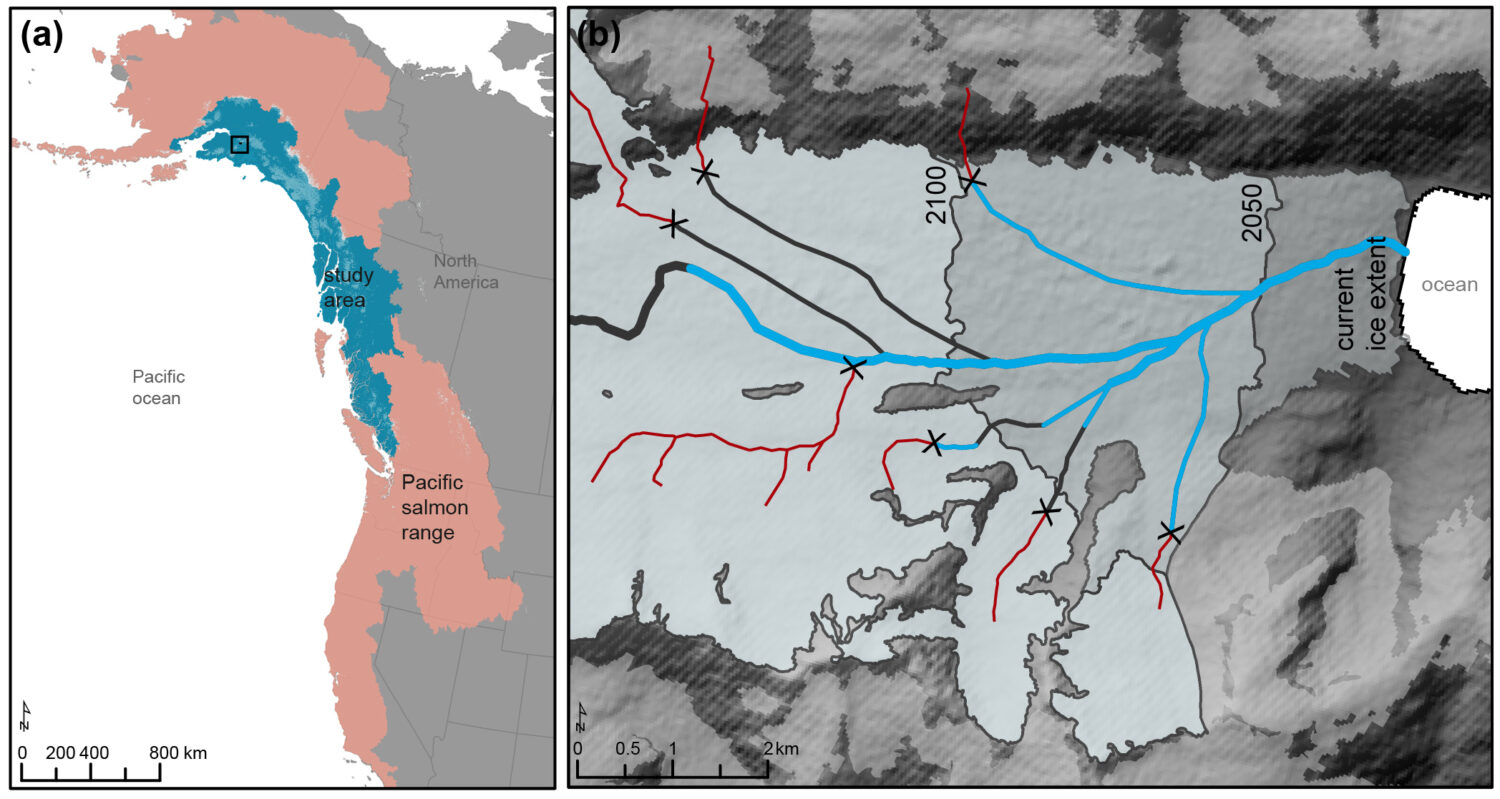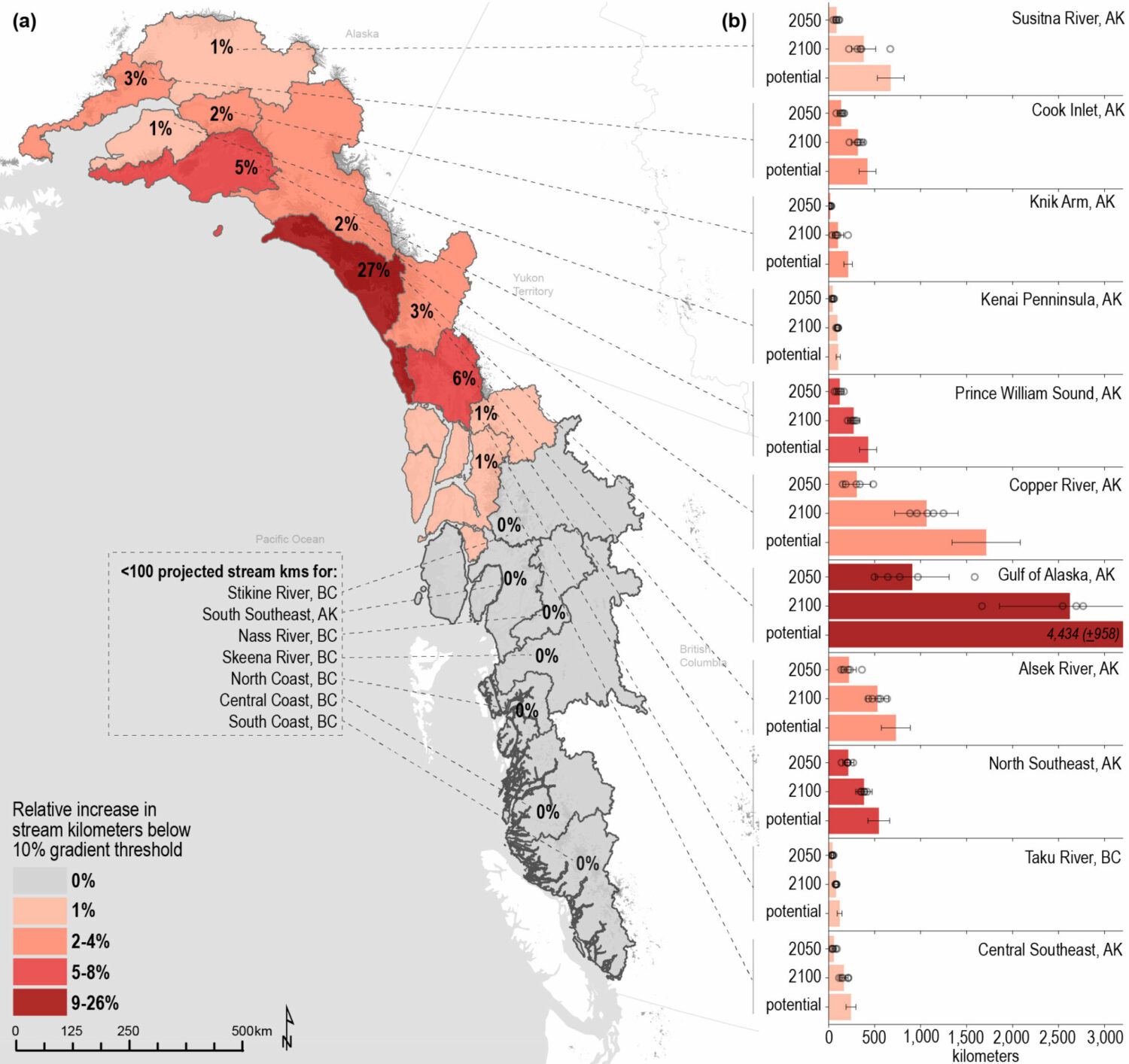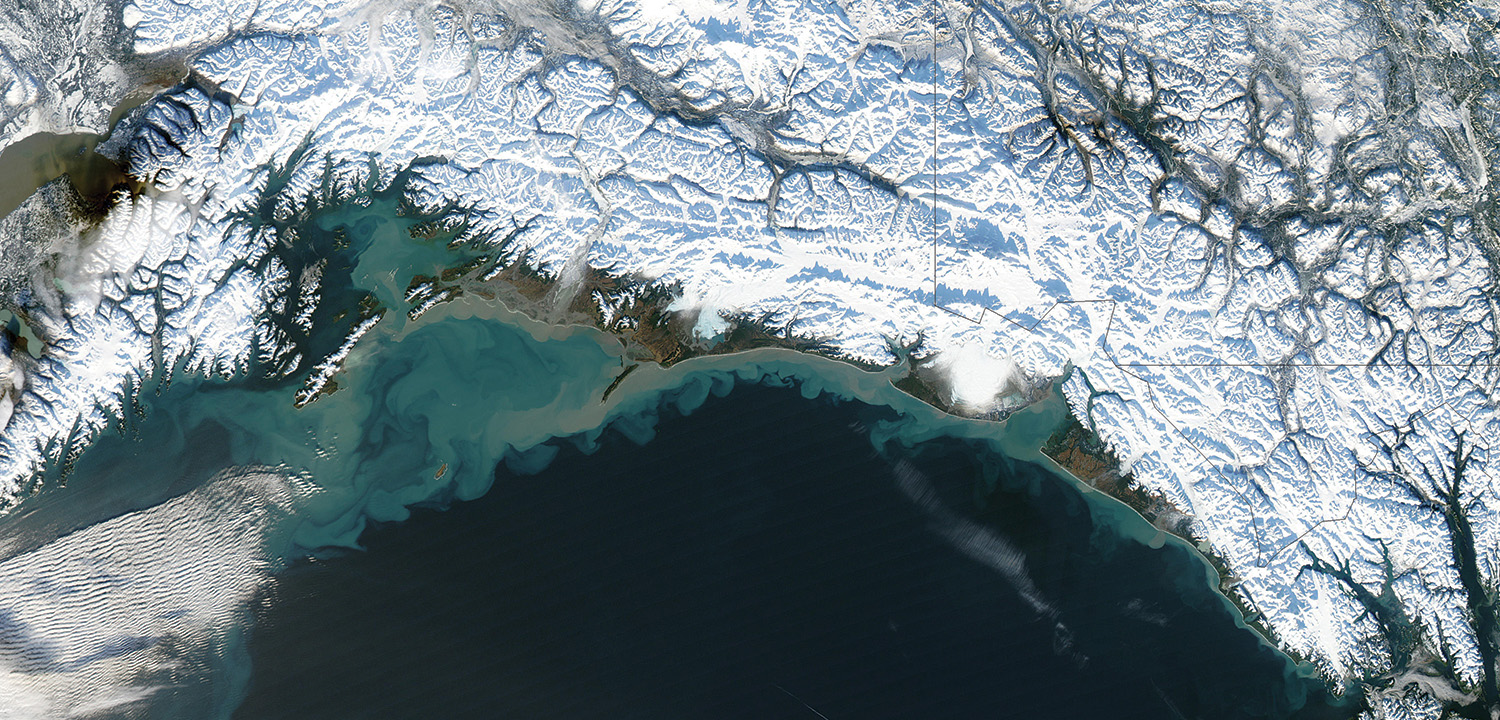A new study peels back the ice to find where climate change could create new salmon habitat. Will we give salmon the chance to find it?
Retreating glaciers could create more than 6,000 kilometers of potential new salmon habitat by the year 2100, finds a new study published this December in Nature Communications.
The study, from the same team behind a foundational 2020 study published in BioScience, modeled different climate change scenarios for 46,000 glaciers between southern British Columbia and southcentral Alaska.

Led by Dr. Kara Pitman, a spatial analyst at Simon Fraser University, the team found that under moderate climate change conditions, retreating ice could create new salmon-accessible habitat for 315 glaciers in the study area. (See Fig. 1, above, reprinted with permission from the study team.)
“We predict that most of the emerging salmon habitat will occur in Alaska and the transboundary region, at the British Columbia-Alaska border, where large coastal glaciers still exist,” Dr. Pitman said in a statement.
The team found that under moderate climate change conditions, retreating ice for 315 glaciers could create salmon-accessible habitat.
Over millennia, salmon have evolved strategies for colonizing new habitats, Dr. Pitman notes.
“It’s a common misconception that all salmon return home to the streams they were born in,” she notes. “Most do, but some individuals will stray—migrating into new streams to spawn and, if conditions are favorable, the population can increase rapidly.”
The promise of potential new salmon habitat comes at a time when Pacific salmon are struggling across most of their range, from the Columbia River north to the Yukon. Habitat loss—driven primarily by human activities such as natural resource extraction and development—has played a critical role in the decline of many of these populations.

But while glacier retreat might create new salmon habitat, the rapid climate change melting those glaciers underscores the larger threat that salmon face, from ocean heat waves to warming rivers.
According to coauthor Dr. Matt Sloat, Wild Salmon Center Science Director, safeguarding these areas of potential new habitat could help realize local gains for salmon. That starts with doing a better job of factoring climate change into land use and planning decisions for these areas.
“Salmon have survived many climate crises during their history,” says Dr. Sloat. “To survive the current challenges, they need time and space to adapt, to find and colonize new habitats. That means considering where that future productive habitat could be, even if it’s under the ice right now.”
Salmon need time and space to adapt, to find and colonize new habitats,” says Dr. Sloat. “That means considering where that future productive habitat could be, even if it’s under the ice right now.”
Where and when that new habitat might emerge is identified in the study. (See Fig. 2, above, reprinted with permission from the study team.) And that’s information that could be put to good use, says co-author Dr. Jonathan Moore, a professor of biological sciences at SFU.
“This study indicates that while climate change poses a grave threat to salmon, there may be new opportunities for salmon in some local geographies,” says Dr. Moore. “This is an opportunity to better inform decision-making so that we don’t just steward current salmon habitat, but also the salmon habitat of the future.”
